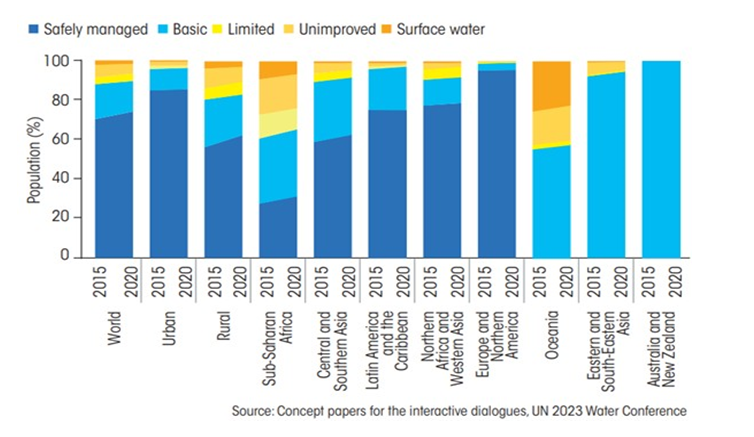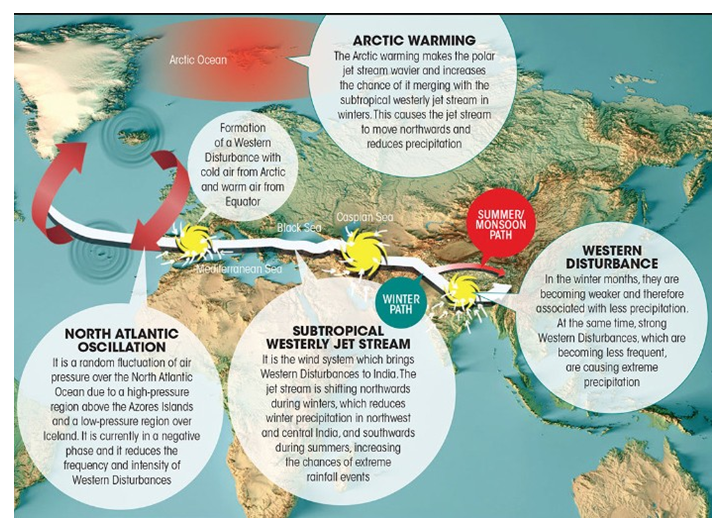Down To Earth(March16-31 2023)
1. HYBRID MILLETS
- The year 2023 is declared as the International Year of Millets by the UN as suggested by India. After the government’s statement of production and distribution of certified seeds of newly released varieties/hybrids, it is speculated that their hybrid varieties may not be as potent as the traditional ones.
About Millets:
- Millets are a group of small grained cereal food crops which are tolerant to extreme weather conditions and can be grown with low inputs such as fertilizers and pesticides.
- Millets are classified into Major Millets and Minor Millets based on their grain size.
- Millets are nutri cereals consisting of sorghum, pearl millet, finger millet (Major millets) foxtail, little, kodo, proso and barnyard millet (minor millets). These are one of the oldest foods known to humanity.
- Millets are highly nutritious, non-glutinous, non acidic foods and have many nutraceutical and health promoting properties especially the high fiber content.
About Hybrid Crops:
- Hybrid seed is produced by cross-pollinated plants which are genetically diverse.

- Hybrid crops in India began after the start of the Green Revolution, which aimed to achieve food security through increased crop production.
Hybrid in Millets:
- There have been initiatives to develop high yielding and disease-resistant varieties of millets as well. Eg: Project on Intensified Research on Cotton, Oilseeds and Millets established in 1958; the All India Coordinated Millet Improvement Project, 1965 etc.
- Hybrid varieties can be developed only in large-grained major millets like jowar (sorghum) and bajra (pearl millet), in which cross pollination is possible.
- In the case of sorghum 35 hybrids while for pearl millet 25 high yielding and disease-resistant hybrids have been released. In both these millets, farmers are usually dependent on the hybrid varieties.
- Data released by the National Institute of Nutrition (NIN) suggests calcium levels in pearl millet reduced from 42 mg to 27 mg per 100 g and phosphorus levels reduced from 296 mg to 289 mg per 100 g and iron levels from 8 mg to 6 mg per 100 g during 1980s to 2010s.
- It seems that the decades of research on millets have missed the aspect of nutrition in them.
Way Forward:
- There is a need for a more expanded vision to promote millets which includes wide varieties of traditionally
- available millets as against currently nine millets researched in the country.
- Some crops are getting lost with change in cultivation practices which must be addressed.
- Identifying and promoting lost or less grown varieties will help ensure the real benefits of millets reach people.
2. WATER CRISIS
- For the first time in history, human civilization has breached the planetary boundary for water. With the demand for freshwater fast exceeding supply, the UN water conference, being held almost after 50 years, at UN Headquarters in New York faces huge challenges.
THE PLANETARY BOUNDARY
- The planetary boundaries concept presents a set of nine planetary boundaries within which humanity can continue to develop and thrive for generations to come. Crossing these boundaries increases the risk of generating large-scale abrupt or irreversible environmental changes.

Extent of Water Crisis:
- Global demand for freshwater will exceed supply by 40 per cent by 2030.
- 80 % of the impacts of climate change are felt through water.
- In 2020, 2 billion people did not use safely managed drinking water while 771 million did not use basic drinking water services.
- There are wide geographical disparities in access to safely managed drinking water.

Global Response:
- Total of 193 countries meet at the UN 2023 Water Conference in the US on March 22-24 to call for transformative water management policies and practices.
- The world has a much better understanding of the global water challenges countries have committed to solving these problems. Eg: 2030 Agenda for Sustainable Development i.e. SDG-6 to “Ensure availability and sustainable management of water and sanitation for all”.
- The UN prepared five concept papers for interactive dialogues on themes such as:
- Water for health;
- Water for sustainable development;
- Water for climate, resilience and environment;
- Water for cooperation;
- The Water Action Decade.
The crisis of freshwater adds an international dimension to climate change adaptation and disaster risk reduction.
3. IMPACT OF EXTREME WEATHER ON AGRICULTURE:
CASE STUDY OF “DESAWARI PAAN”
- Desawari Paan cultivated in Mahoba district of UP received GI Tag in 2021. Farmers of this delicacy have been facing existential threat due to climate change.
- Bijendra Chaurasia - a farmer says his betel leaf garden aka “bareja” spread over 0.4 hectare has been affected due to heavy dew and cold waves in January and destroyed Rs. 10 lakh worth of pan (betel leaves).
About Betel Leaves:
- Betel leaves, along with areca nuts and other assorted condiments, are chewed as mouth fresheners across the
- Indian subcontinent.
- Betel leaf is a highly profitable crop which lasts for two to three years; harvesting is done once every month.
- The leaves are sensitive to variations in temperatures and rainfall. Too much rain, or temperatures below 6˚C or above 45˚C, destroy them.
Multidimensional Impact of crop failure:
- Pan growers in Mahoba have gone down by 75 per cent from 410 in 2000, while the area under the crop has reduced by 95%.
- Rise in input costs has also made farming pan unviable.

- The Paan Protsahan Yojana, introduced in 2018 under the Rashtryia Krishi Vikas Yojana, covers 50 per cent cost borne by a farmer but it only benefits those who own the land.
- In Mahoba pan mandi (marketplace for betel leaves) most shops have closed down and remaining mostly sell betel leaves from West Bengal.
- It is suggested that to improve growers’ income the government must promote value-added products made from pan. Eg: Oil extracted from pan which is used in ayurvedic medicines and in making pan-flavoured candies, sweets and ice creams etc.
4. WESTERN DISTURBANCES
- Western Disturbances have a significant impact on climatic conditions over the Indian subcontinent. Western Disturbances coupled with other conditions like El-Nino/La-Nina have impacted not only weather conditions in India but also agricultural productions at large.
- El Niño: El Niño is a climate pattern that describes the unusual warming of surface waters in the eastern equatorial Pacific Ocean. Over the Indian subcontinent, rainfall tends to become reduced while rainfall increases over the central and eastern tropical Pacific Ocean.
- La Niña: La Niña is a pattern that describes the unusual cooling of the surface waters in the eastern equatorial Pacific Ocean. Over the Indian subcontinent, rainfall tends to increase while rainfall decreases over the central and eastern tropical Pacific Ocean.
- El Niño-Southern Oscillation (ENSO): The El Niño-Southern Oscillation (ENSO) is a recurring climate pattern involving changes in the temperature of waters in the central and eastern tropical Pacific Ocean. In periods ranging from about three to seven years, the surface waters across a large swath of the tropical Pacific Ocean warm or cool by anywhere from 1°C to 3°C, compared to normal. This oscillating warming and cooling pattern, referred to as the ENSO cycle.
What is a western Disturbance?
- Western Disturbances are cyclonic storms that form over land, and they occur mostly in the Mediterranean region due to a temperature gradient caused by the mixing of warm air from the tropics and cold air from the northern polar regions.
- While the storm systems occur throughout the year, they travel to India mostly between December and April because of the trajectory of the subtropical westerly jet stream.
- Western Disturbances are more intense during El Niño and are also influenced by the North Atlantic Oscillation.

Effects of Western Disturbances in India:
- The low-pressure storm systems help farmers in India grow their rabi crop, bring snow to the Himalayas and maintain the flow of the northern rivers.
- Western Disturbance collects moisture from the Mediterranean Sea, Black Sea and Caspian Sea and traverses over Iran and Afghanistan before hitting the western Himalayas. Strong Western Disturbances reach the central and eastern Himalayas and cause rain and snow in Nepal and northeast India.
Impact of Climate Change on Western Disturbances:
- The reason for the abnormal winter seasons since 2020-21 lies in the changing character of the Western Disturbances which bring winter rains to northwest India.
- Western Disturbances are avoiding the winters; they have started visiting India more frequently during the summers.
- When tropical cyclones hit land they need warm surface temperatures and shear to maintain themselves which is provided by Western Disturbances if they arrive late. Eg: Such an interaction triggered the Uttarakhand floods in June 2013, which killed over 6,000 people, and caused damages worth US $1.1 billion.
- Global warming could reduce the temperature gradient in the Mediterranean that is crucial for the formation of Western Disturbances.
5. DISEASE OUTBREAK DUE TO CLIMATE CHANGE
- Various African countries are facing grave epidemics and diseases since they are hit by natural calamities like floods, cyclones etc. This shows a clear connection between climate change and disease outbreak.
- Malawi: Face 3 cyclones in 2022 - now facing the worst-ever cholera wave. It has spread to all the 29 districts of the country, infecting 36,940 people and killing more than 1,200 as of February 9, 2023.
- Nigeria: Faced flood in 2022 - followed by worst ever cholera caseload.
- Kenya: Most severe drought in four decades - followed by a cholera outbreak.
About Cholera:
- Cholera acute diarrhoeal infection, caused by consuming food or water contaminated with bacterium Vibrio cholerae.
- Cholera is an extremely virulent disease that can cause severe acute watery diarrhea.
- Cholera affects both children and adults and can kill within hours if untreated.
- Most of those infected will have no or mild symptoms and can be successfully treated with oral rehydration solution.
Climate connection of Diseases:
- Climate change is a risk factor for cholera due to increased rainfall and warmer temperatures which can cause increased levels of pathogen growth and their spread.
- WHO in a comprehensive and definitive assessment in 2022 said that climate related health emergencies are on the rise in Africa.
- In the second week of February 2023, African countries reported 125 disease outbreaks. This is more than 2.8 times the outbreaks reported in the same period in 2018.
- Warming in the east African highlands is allowing malaria-causing Anopheles mosquitoes to survive in higher altitudes expanding its range on the African continent.
- There has been a surge in cases of measles, a disease that can cause child deaths but is preventable by vaccine. Studies say that the virulence and survival of measles virus in air is mainly influenced by temperature and relative humidity.
- Climatic factors are aiding the risk of zoonotic pathogens such as the novel coronavirus (sars-cov-2) that transmit from animals or birds and cause severe disease outbreaks in humans. Eg: Ebola outbreak.
Way Forward:
- African countries are more vulnerable to these disease outbreaks given widespread poverty and low immunity.
- Thus support must be provided for better healthcare and sanitation.
- Foundations of healthcare infrastructure and preventive healthcare must be established with the support of the international community.
- Countries should take immediate and concrete steps to fight climate change.
Mains Questions
- Despite receiving good rainfall and fed by many rivers, India still faces water scarcity in some parts. Discuss the reason behind water scarcity and steps taken to remedy the situation.
QUICK LINKS